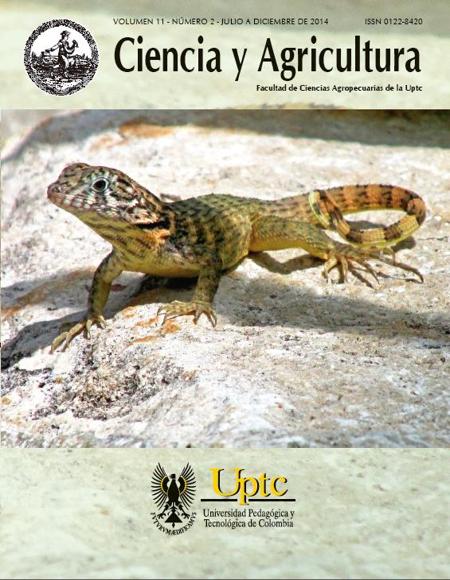Phylogenetic analysis of rabies virus in mammals reported in Colombia between 1994 and 2008

Abstract
Rabies is a viral zoonosis distributed worldwide that affects the central nervous system. Epidemiologically, due to the form of transmission rabies has been classified into two categories: urban form, associated with canine and feline, and sylvatic, involving vampire bats. In Colombia, the first rabies virus was isolated in 1968 from the vampire bat (Desmoncus rotundus), and since then the population has been historicall affected by urban and jungle outbreaks. The objective of this study was to analyze 19 partial sequences of nucleocapsid protein N of rabies virus reported in Colombia, and deposited in GenBank between 1994 and 2008, to establish their phylogenetic relationships. The phylogeny showed four monophyletic groups. Epidemiologically, two forms of transmission of the virus (urban and sylvatic cycle) are present, with implications for public health. Therefore, it is necessary to implement prevention and control measures to reduce the impact of the zoonosis on the human population.
Keywords
computational biology, lyssavirus, phylogeny, zoonosis.
References
- Beltrán FJ, Dohmen FG, Del Pietro H, Cisterna DM. Diagnosis and molecular typing of rabies virus in samples stored in inadequate conditions. J Infect Dev Ctries, 2014; 8(8): 1016-1021.
- Knobel DI, Cleaveland S, Coleman PG, Fevre EM, Meltzer MI, Miranda ME, et al. Re-evaluating the burden of rabies in Africa and Asia. Bull World Health Organ, 2005; 83:360-368.
- Johnson N, Aréchiga CN, Aguilar SA. Vampire bat rabies: ecology, epidemiology and control. Viruses, 2014; 6(5): 1911-1928.
- Badrane H, Bahloul C, Perrin P, Tordo N. Evidence of two Lyssavirus phylogroups with distinct pathogenicity and immunogenicity. J Virol, 2001; 75: 3268-3276.
- Kuzmin IV, Mayer AE, Niezgoda M, Markotter W, Agwanda B, Breiman RF, et al. Shimoni bat virus, a new representative of the Lyssavirus genus. Virus Res, 2010; 149: 197-210.
- Zima J, Macholán M, Munclinger P, Piálek J. Genetické metody v zoologii Karolinum 2004. UK.
- Vallo P. Basic phylogenetic methods, proceedings of the 4th international summer school on computational biology: Statistical methods for genetic and molecular data, Brno, 2008: 72-82.
- Lesk, A. M. Introduction to genomics. 2007. Oxford University Press, Oxford.
- Posada D, Crandall KA. Modeltest: testing the model of DNA substitution. Bioinformatics, 1998; 14(9): 817-818.
- Martínková N. Tutorial in phylogenetic analyses, proceedings of the 4th international summer school on computational biology: Statistical methods for genetic and molecular data, Brno, 2008: 92-106.
- Condori CRE, Streicker GD, Cabezas SC, Velasco VA. Enzootic and epizootic rabies associated with vampire bats, Perú. Emerg Infect Dis, 2013; 19(9): 1063-1069.
- MEGA 4.0. 2007. Molecular evolutionary genetics analysis software version 4.0. Center of evolutionary functional genomics diodesign institute, Arizona State University.
- MrModeltest 2.3. 2004. Evolutionary biology center, Uppsala University.
- Dambe. 2000. Data analysis in molecular biology. Kluwer Academic Publisher.
- Páez A, Núñez C, García C, Boshell J. Molecular epidemiology of rabies epizootics in Colombia: evidence for human and dog rabies associated with bats. J. Gen Virol, 2003; 84: 796-802.
- Carnieli P, De Oliveira FW, Castilho JG, Novaes OR, Macedo CI, Durymanova E, et al. Characterization of rabies virus isolated from canids and identification of the main wild canid host in Northeastern Brazil. Virus Research, 2008; 131(1): 33-46.
- García AF, Holgado JW, Aguilar AEG, Quispe FMM. IFD para la detección del virus de la rabia en murciélagos del distrito de Huanipaca, Abancay. SITUA, 2004; 13(2): 5-9.
- Nad SA, Dav IN, Muldoon ISF, Wandelera AI. Molecular epidemiological analysis of the incursion of the raccoon strain of rabies virus into Canada. Epidemiol. Infect, 2006; 134: 534-547.
- Cliquet F, Robardet E, Must K, Laine M, Peik K, PME, et al. Elimination rabies in Estonia. PLoS NEGL Trop Dis, 2012; 6(2): e1535:1-17.
- Núñez SF, Favi CMU, Urcelay VS, Sepúlveda CA, Fábrega GF. Rabia silvestre en murciélagos insectívoros en Chile. Bol Oficina Sanit Panam, 1987; 103(2): 140-145.
- Velasco VA, Orciari LA, Juárez IV, Gómez SM, Padilla MI, Flisser A, et al. Molecular diversity of rabies viruses associated with bats in Mexico and other countries of the Americas. J Clin Microbiol, 2006; 44(5): 1697-1710.
- David D, Jacobson B, Smith JS, Stram Y. Molecular epidemiology of rabies virus isolates from Israel and other middle- and near-eastern countries. J Clin Microbiol, 2000; 38(2): 755-762.
- Valderrama J, García I, Figueroa G, Rico E, Sanabria J, Rocha N, et al. Brotes de rabia humana transmitida por vampiros en los municipios de Bajo y Alto Baudó, departamento del Chocó, Colombia 2004-2005. Biomédica, 2006; 26: 387-96.
- Páez A, Polo L, Heredia D, Núñez C, Rodríguez M, Agúdelo C, et al. Brote de rabia humana transmitida por gato en el municipio de Santander de Quilichao, Colombia, 2008. Rev. Salud pública, 2009; 11(6): 931-943.
- Páez A, Rey G, Agudelo C, Dulce A, Parra E, Díaz GH, et al. Brote de rabia urbana trasmitida por perros en el distrito de Santa Marta, Colombia, 2006-2008. Biomédica, 2009; 29:424-436.
- Badillo R, Mantilla JC, Pradilla G. Encefalitis rábica humana por mordedura de murciélago en un área urbana de Colombia. Biomédica, 2009; 29: 191-203.
- Instituto Colombiano Agropecuario. (ICA). Sanidad Animal Informe del 2010. (Fecha de acceso 11 de febrero de 2015). Disponible en: http://www.ica.gov.co/getattachment/5822cada-
- f-4541-8b86-c0258be04b64/2010.aspx
- Pening JP. Evaluación del proceso de descentralización en Colombia. Economía y Desarrollo, 2003; 2(1): 123-149.
- Ramírez BMR. Las reformas del Estado y la administración pública en América Latina y los intentos de aplicación del New Public Managemen. Estudios Políticos, 2009; 34:115-141.